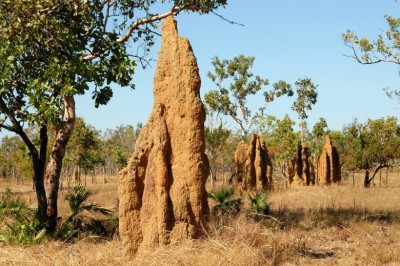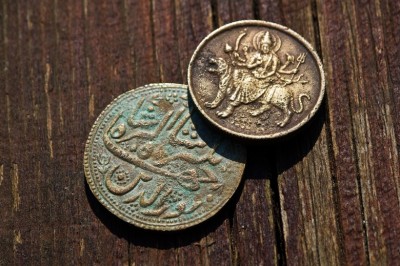Seawater Pearl Or Freshwater Pearl - Whats The Difference
The pearl is an ancient and appreciated piece of jewelry. So how long have pearls been around and where do they come from? And what about freshwater pearls vs. saltwater pearls - how do they differ?
For thousands of years, most seawater pearls were retrieved by divers working in the Indian Ocean, in areas like the Persian Gulf, the Red Sea, and in the Gulf of Mannar.
Starting in the Han Dynasty (206 BC - 220 AD), the Chinese hunted extensively for seawater pearls in the South China Sea. Before the beginning of the 20th Century, pearl hunting was the most common way of harvesting pearls. Today, almost all pearls used for jewelry are cultured by planting a core or nucleus into pearl oysters. These oysters are either freshwater oysters or seawater and believe it or not, they produce different types of pearls.
So what is the difference? To understand the difference between the pearls, first you have to understand how pearls are made. A pearl is formed when a small irritant or parasite penetrates and lodges in the mantle tissue of a mollusk. In response, a substance called nacre is secreted, and the creation of a pearl begins. Nacre is a combination of crystalline and organic substances. The nacre builds up in layers, as it surrounds the irritant to protect the mollusk, and after a few years, this build up of nacre forms a pearl.
When this nacre naturally appears within a mollusk it makes what is called a natural pearl. These pearls are therefore formed by chance. Cultured pearls have been given a helping hand by man. But the same process takes place. The difference is that with the cultured pearl, the inducement is intentional.
Freshwater pearls differ from seawater pearls, in that the great majority of freshwater are not bead-nucleated. Nucleated cultured pearls are often pre-formed as they tend to follow the shape of the implanted shell bead nucleus. Once the pre-formed beads are inserted into the oyster, it secretes a few layers of nacre around the outside surface of the implant before it is removed.
The two pearls differ in that the saltwater pearl will have a nacre coating while the freshwater wont. The thickness of the nacre coating in saltwater pearls gives it that interesting luster. Here is a comparison of saltwater pearls nacre coating.
- The nacre coating of Japanese Akoya pearls about a half-millimeter.
- The nacre coating of Tahitian pearls-about 2 to 3 millimeters.
- South Sea pearls develop the thickest-from 2 to 6 millimeters.
With freshwater pearls, they are all just pearl with little nacre.
Another difference between the two pearls is in their roundness. Typically the value of a pearl is based on roundness, size and lustrous qualities. This is why the Japanese Akoya saltwater pearls are so valuable as they are some of the roundest most lustrous pearls in the world. Cultured saltwater pearls tend to stay consistently almost round. Freshwater pearls can be found in almost any shape that you can imagine: round, drop, rice, button, oval, semi-round, circle or ringed, baroque and semi-baroque.
But when it comes to size, because freshwater pearls are larger than saltwater and also more round, one would think this would increase their value. This is where the pearl industry is changing. When it comes to weighing freshwater pearls with saltwater, no matter what size or roundness, saltwater will always be more valuable. This is due to supply and demand. There is a plethora of freshwater pearls available each year-unlike saltwater pearls. While freshwater pearls are beautiful and affordable, cultured saltwater pearls are of investment grade quality.
And then there is color. Freshwater pearls have a special attraction since they come in a wide range of colors, more so than seawater pearls. Freshwater pearls achieve their color when the harvester adds very small quantities of metals to the water on a pearl farm. A cultured saltwater pearl will vary little in color.
How long does it take to cultivate a saltwater pearl as opposed to a freshwater pearl? Today the amount of time is nearly identical. But not long ago, freshwater pearls had a short cultivation time, as short as 18 to 24 months. The saltwater pearls were taking two to three years to form. Freshwater farmers realized that the short time they were giving their pearls made them small in size. They therefore began elongating their cultivation time from three to six years. Now, both freshwater pearls and cultured come in similar sizes, with the most popular pearls ranging from 9 to 16 mm.
Because of the differences between a saltwater pearl and freshwater along with the supply and demand, the value of pearls in jewelry is now determined by a combination of the luster, color, size, lack of surface flaw and symmetry that are appropriate for the type of pearl under consideration. Among those attributes, luster is the most important differentiators of pearl quality according to jewelers.
Pearls will be around for a long time, as they already have such a strong and significant history and certainly their value will continue to be passed along with them.About The Author
Vics Fine Jewelry is a leading provider of south sea pearls online. With a wide selection of Tanzanite earrings, pendants and much much more were sure to have the perfect piece for you or a loved one. Visit us at http://www.vicsfinejewelry.com/ today.




























